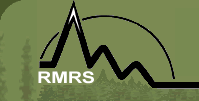|
|
AWAE Program Headquarters
322 East Front St., Ste 401
Boise, ID 83702
(208) 373-4340
Rocky Mountain Research Station Headquarters
2150 Centre Ave., Bldg A
Fort Collins, CO 80526
(970) 295-5923
|
|

|
|
| Forest Service Research and Development has created a new web presence. You will be redirected to the new page in a moment. Please update your bookmarks. |
 |
Welcome to the Fisheries and Aquatic Sciences for Kids, Class in the Creek HomePage! Here you can learn more about our program and discover the amazing treasures of your local river ecosystem! Watch our 2 minute introductory video!
For Slow internet connections, press pause and wait for video to load before pressing "PLAY" |
Video by: Angelica Vicente |
|
 |
|
 |
Class in the Creek at the MK Nature Center begins with a pre-fieldtrip lesson on aquatic ecology in the school classroom. Upon class arrival to the Nature Center, children are guided to the creek to participate in hands-on, discovery learning. While splashing around and having fun in the river, kids are also collecting aquatic macroinvertebrates and fish, classifying and identifying insects and other organisms to observe the morphology, structure, function and adaptations of these organisms while also learning about indicators of water quality, food webs, the interrelatedness of aquatic habitats and the basic effects of climate change.
Many students who attend Class in the Creek activities tell us they have never gotten into a river and explored, while even more students profess that they aren’t even sure where the river’s water comes from! They begin the field trip thinking that it will be boring and “dumb” as one 5th grader admitted, and they leave with a profound excitement and interest in river ecosystems. A few initially skeptical children proclaimed that class in the creek “is so much cooler than I thought, and so much fun!” |
 |
 What will you Find in the River? What will you Find in the River?
|

|
| After picking out a cool pair of boots to wear, we'll be ready to wade out into the river! Yes it's cold and yes, you will get a little wet... But nevermind that, when there's so much cool stuff to be found. We kick up the rocks and catch the debris in our kick nets, while another teammate scavenges around for other aquatic treasures! CLICK HERE to see what we found! (Your kick-net won't come up with every one of these creatures, make a note of which insects, fish and plant life you find in different parts of the river). |
 |
River Facts You Outta Know!
Q. Where did all of that water come from? |
Answer: That water is flowing as if it's going somewhere in a hurry! And it is! Up in the mountains, snow and rainfall trickle down steep mountain sides forming multiple small streams which cut into the earth and meet up with water that has seeped into the ground. Eventually these small streams meet up into a larger river, which again feed into even larger rivers.
|
| Q. Where is all of that Water Going so Fast? |
Answer: Eventually these streams and larger rivers finally make it to the ocean! This area of land from where the first river starts all the way to where it drains into the ocean is called the Columbia River Basin watershed.
This large watershed can be broken down into smaller ones.
|
| Q. How can I tell if our river is clean? |
Answer: There are multiple ways to tell if your local river is clean! One fun way is to examine the types of insects, and other life forms that are surviving in it. Many can not tolerate polluted water, so if you see these, it's a good sign that the water is pretty clean! Use this bug identification card showing tolerant and intolerant species.
|
| Q. How far is it to the Ocean? |
| Answer: From Boise, Idaho winding along the rivers it is approximately 700 miles of treacherous waters, manufacturing plants and about 11 dams to the Pacific Ocean. |
|
 |
What types of fish are native to Idaho's Rivers?
There are many species of fish in our local rivers, however not all of them are native to Idaho (meaning people brought them in). This might seem harmless but native fish species have spent countless years adapting to the local environment. Non-native fish species have done the same in other parts of the country or world and might find it easier to thrive in Idaho which can seriously upset the delicate ecosystem that we live in. CLICK HERE for the MK Nature Center's Fish Identification Chart! |
| |
|
|
| Local Links |
|
 |
| Cool Kid's Links |
|
|
|
 |
|
|
|
|





